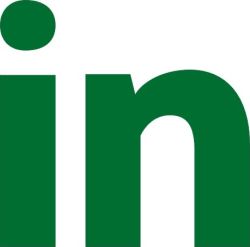Benefits of Marketing Automation

The benefits of marketing automation range from lower costs in lead acquisition to better customer engagement and happy customers. Marketing automation automates your marketing processes and allows you to measure the results so you can adjust strategy as needed to maximize your return on investment. The benefits of marketing automation include the following:
-
Increased Sales: You can market personalized content at strategic times to move buyers through the sales funnel.
-
Better Customer Engagement: Engaging customers with content that is timely and relevant to them helps keep them focused on your brand.
-
Reduced Costs: You can reach a large number of customers through marketing automation as well as being able to engage and convert prospects.

- SEO
- Website Analytics
- Google Paid Ads
- Social Paid Ads
Personalize Your How Do I Create a Marketing Automation Strategy?
To see the full benefits of marketing automation, you need to have a successful marketing automation strategy. First, identify your marketing and sales goals.
- What are you trying to accomplish?
- Do you want more leads or do you want more conversions?
Once these goals are determined, define your target audience and their behaviors and create content targeted to reach these people. Content that appeals to one demographic, may not work with all of your customers.
Next, map out the customer journey–from when they first hear about you through the point where they make a purchase or sign up for your service. This will help guide how we craft our automation strategy moving forward.
Finally, select appropriate automation tools based on what has worked well for other businesses in similar industries or situations as yours. Understand your objectives before you research automation platforms so you can select the platform that will best work for your company’s needs.
What are Some Common Marketing Automation Strategies?

Lead Nurturing
This is a process by which you can communicate with your leads in an automated fashion, sending them relevant content and offers based on their stage in the buying cycle. For example, if you’re looking at marketing automation as a way to generate leads for your business, then it might be useful for you to send out emails that offer helpful resources or tips on how to get started with your product or service.

Email Marketing
Email automation allows marketers to create campaigns that automatically send out emails based on certain triggers (like when someone visits your website). This makes it easy for businesses without large teams of writers or designers because they don’t have to worry about creating individual emails; they just set up the rules once and let their system do all of the heavy lifting from there!

Social Media Automation
Social media platforms like Facebook allow users who have created pages within those networks access tools like “post scheduler,” which allows them to schedule posts ahead of time so their followers don’t miss anything important happening within their networks. This is useful for company announcements, offers, and initiatives and for scheduling other related and timely content.
How Do I Measure the Success of My Marketing Automation Strategy?
- Engagement rates: The number of people who engage with your content, such as opening an email or clicking a link. The tools we use at VIEWS have lead quality scores so you can understand levels of engagement.
- Conversion rates: The percentage of people who engage with your content and then take action, like purchasing something from your site.
- Revenue generated: The amount of money you make from each sale or lead generated by marketing automation.
- Return on investment (ROI): How much profit was earned for every dollar spent on marketing automation tools and strategies.
What Are Some Best Practices to Receive the Most Benefits from Marketing Automation?
Set clear goals. Before you start implementing a marketing automation strategy, you should decide on specific goals of what you wish to achieve. For example, if one of your goals is increasing conversions on specific landing pages and reducing cart abandonment rates while shopping online–you should segment audiences based on those behaviors. For example, you can use tactics to discourage shopping cart abandonment and reach out directly via email with an offer or incentive.
Segment audiences by behavior or interest groups so that they receive personalized content based on their previous interactions with the brand. This will help generate more engagement with each individual user over time as well as increase conversions because they feel like they’re getting something specifically tailored for them instead of generic messages sent out indiscriminately across all channels.
To create a successful marketing automation strategy and process, this infographic can help you to develop a marketing automation strategy based on your customers’ needs.
Conclusion
There are numerous benefits of marketing automation. To maximize your return, get in touch with us at VIEWS Digital Marketing so we can guide you in the right direction toward a successful marketing automation strategy. Reach out to us at 610-650-0227 or fill out our contact form here.
